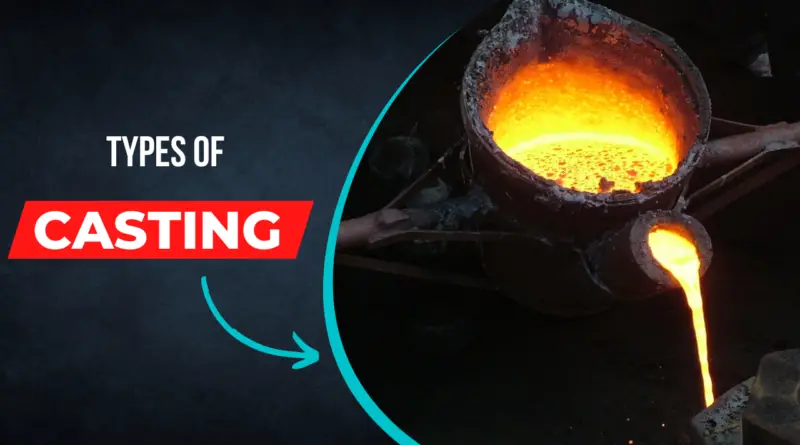Casting Process
Casting is a popular method used in manufacturing to create metal parts. Molten metal is poured into a mold and cooled until it reaches room temperature, resulting in parts with intricate & complex details that can vary greatly in size.
Are you an aspiring production engineer? Here is an overview of the various types of casting processes. From sand casting to vacuum forming, learn about the different techniques used in production engineering and discover which one is right for your project! Get ready to take your engineering skills to the next level!
Casting Process
Casting is an ideal process for mass producing metal parts in large numbers. It can also be adapted to create customized products since different types of molds & materials can be used. This allows obtaining the desired output, tailored to user requirements.
Types of Casting Process
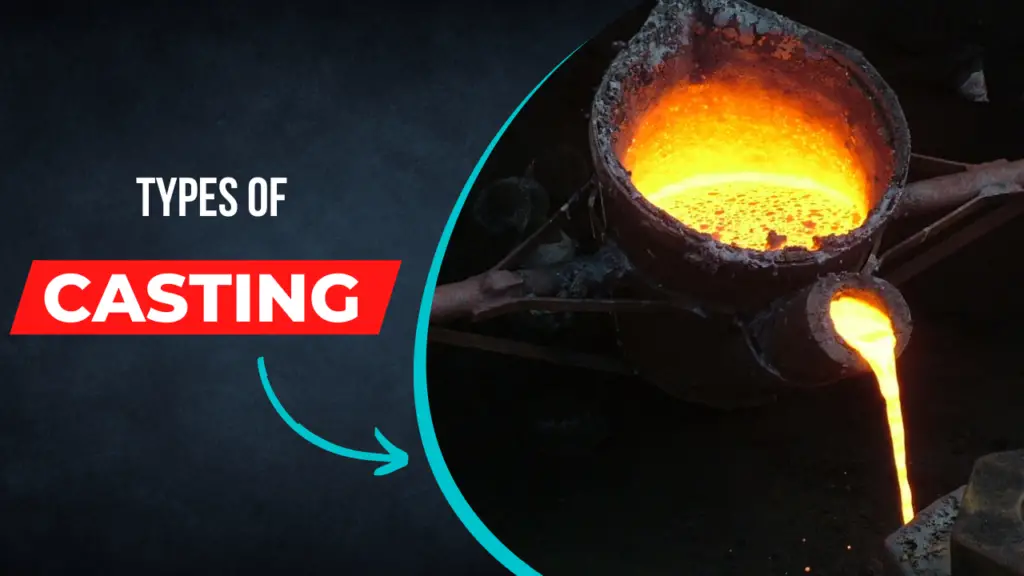
1. Gravity Die Casting
Gravity die casting, also referred to as permanent mold casting, is a metal fabrication method that utilizes reusable molds fashioned from materials like steel and graphite. This process produces various components such as gears, gear housings, pipe fittings, wheels and engine pistons. Gravity die casting is considered the most cost-effective method of manufacturing large quantities of high-quality metal parts, such as gears and engine components. Gravity die casting fulfills many industries’ demands for large variety, production volumes and low part costs.
2. Sand Casting Process
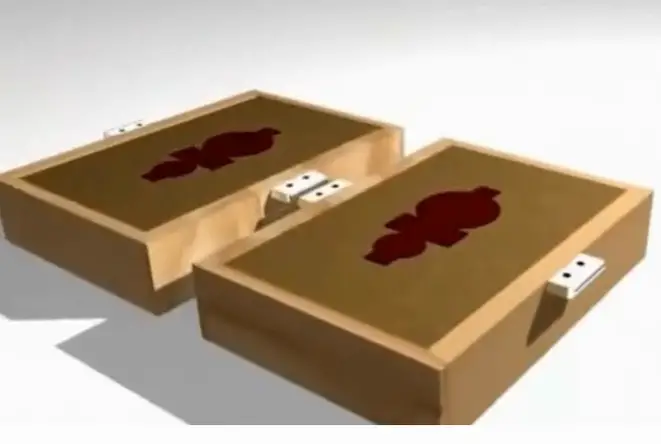
Sand Casting is an efficient technique which can be used to cast any metal alloy, whether ferrous or non-ferrous. It is widely used in industrial production of metal components, such as automobile engine blocks, cylinder heads, crankshafts and more. Sand Casting can be used to create intricate shapes that are not possible by other casting methods. Sand Casting involves pouring a liquid metal into a mold cavity, which is then allowed to set, before the part is removed from the mold and heated to remove any traces of remaining liquid metal. In terms of process efficiency, sand casting can be 10-50% more productive than other methods such as die casting or pressure melting.
3. Pressure Die Casting
Pressure die casting is a manufacturing process that involves using pressure to force liquid metal into a mould. This process can either be low-pressure or high-pressure, depending on the required application. High pressure die casting is a better option when it comes to producing complex geometries with high precision. On the other hand, low-pressure die casting is preferable for large and simple components in mass manufacturing.
4. Plaster Casting
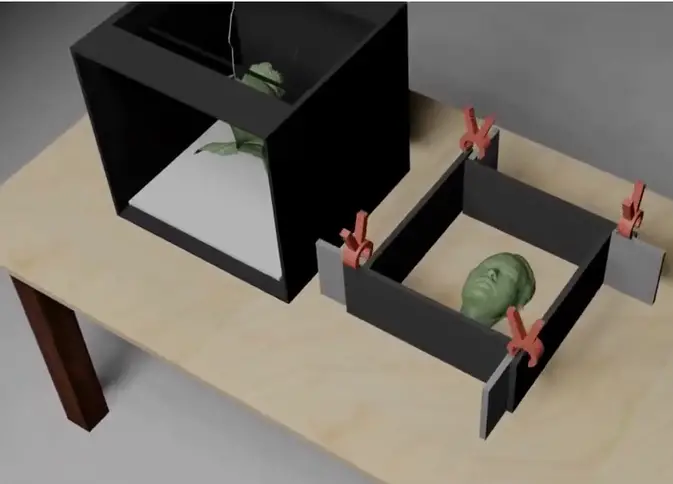
Plaster casting is a process quite similar to sand casting, but uses a special mixture called ‘Plaster of Paris’ to create the mold instead. Plaster has a low thermal conductivity and heat capacity which results in it cooling the metal at a slower rate than with sand. This helps achieve a high level of precision, especially when dealing with thin cross-section parts. However, plaster is not suitable for high-temperature ferrous materials.
5. Investment Casting
Investment casting is a process used to produce complex shapes from a variety of materials. It involves the use of wax patterns, ceramic shells, and molten metal. This process can be used to create intricate parts with fine details and excellent dimensional accuracy. Investment casting has many advantages, such as minimal waste, low cost per part, and accurate parts with no need for additional machining. It is also suitable for producing large quantities of small parts.
6. Centrifugal Casting
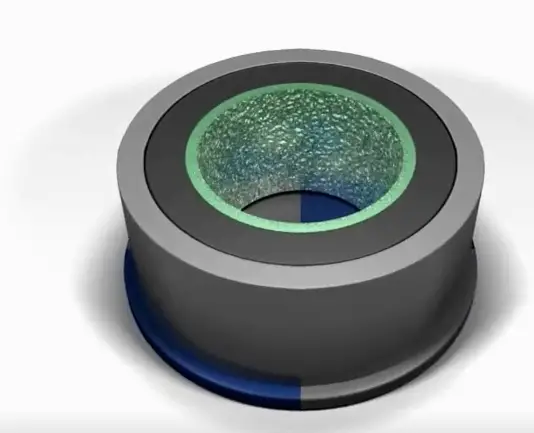
Centrifugal casting, also known as roto casting, is a method of producing cylindrical parts through the application of centrifugal forces. This technique involves pouring preheated molten metal into a spinning die which then solidifies upon contact with the cooler inner core. Centrifugal forces are used to evenly spread molten metal within a die at high pressure. This helps ensure the uniformity and strength of the final product.
7. Lost-Foam Casting
Lost-foam casting is very much like investment casting, except that foam is used in place of wax to create the pattern. After the mold is made, it is treated with refractory ceramic for coating by immersion, spraying or brushing methods. Then, molten metal is filled into the mold to get the desired product.
8. Continuous Casting
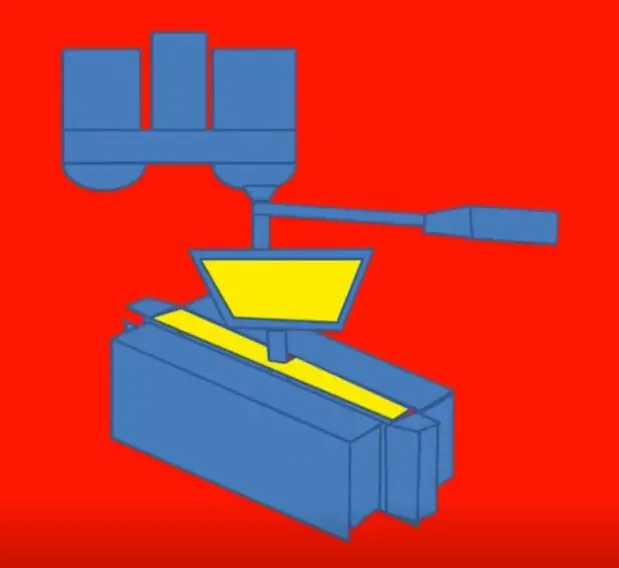
Continuous casting is a manufacturing process that creates metal profiles with a consistent and repeating cross-section. This method is commonly used in the steel industry to produce rods, ingots, billets, and more. With vertical casting, mass production of such components is possible on an ongoing basis.
9. Vacuum Casting
Vacuum casting is the process of creating a new part by pouring molten metal into a mold cavity that is placed in a vacuum chamber with pressure at 100 bar or lower. This technique helps to remove gas and air bubbles from the cast, resulting in better quality parts. To ensure the entrapment of gases is reduced within a die cavity during metal injection, vacuum evacuation is carried out. After this, the metal is cured in a heating chamber and then taken out of the mold.
10. Squeezing Casting

Liquid forging is a metallic forming process that combines die forging and permanent mold casting in a single step. This method has been around for some time and can help improve the production process, while creating greater efficiency overall. A metal alloy in a molten state is injected into a die and pressed to take the desired form. It is then heated beyond its melting temperature to be extracted from the die.
11. Shell Molding
Shell molding is a type of expendable mold casting process. It is comparable to sand casting, however the hardened shell of sand forms the cast instead of using a flask filled with sand. Sand casting typically uses a coarser type of sand but for the shell molding process, a finer grade of sand is used and mixed with resin. The combination is then heated to harden it into the form of a shell that encapsulates the pattern.
